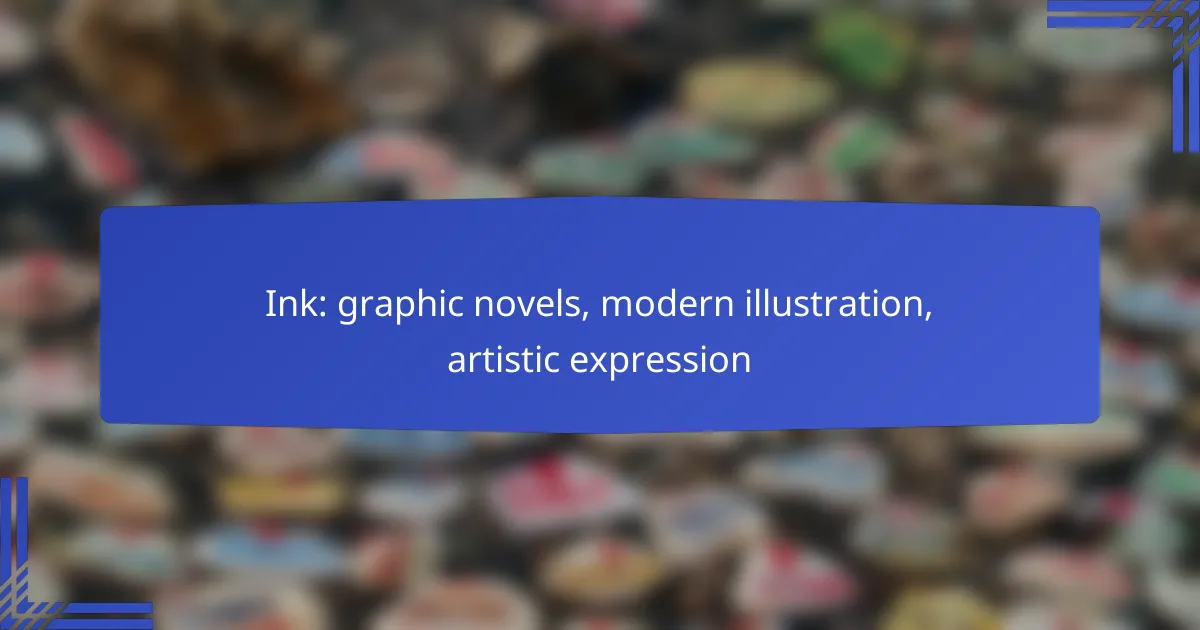Ink plays a crucial role in modern graphic novels and illustration, serving as the medium through which artists express their unique visions. By blending visual art with narrative, graphic novels not only captivate readers but also explore complex themes through innovative artistic techniques. The choice of ink can significantly impact the final artwork, influencing everything from color richness to the ease of application, making it an essential consideration for creators.
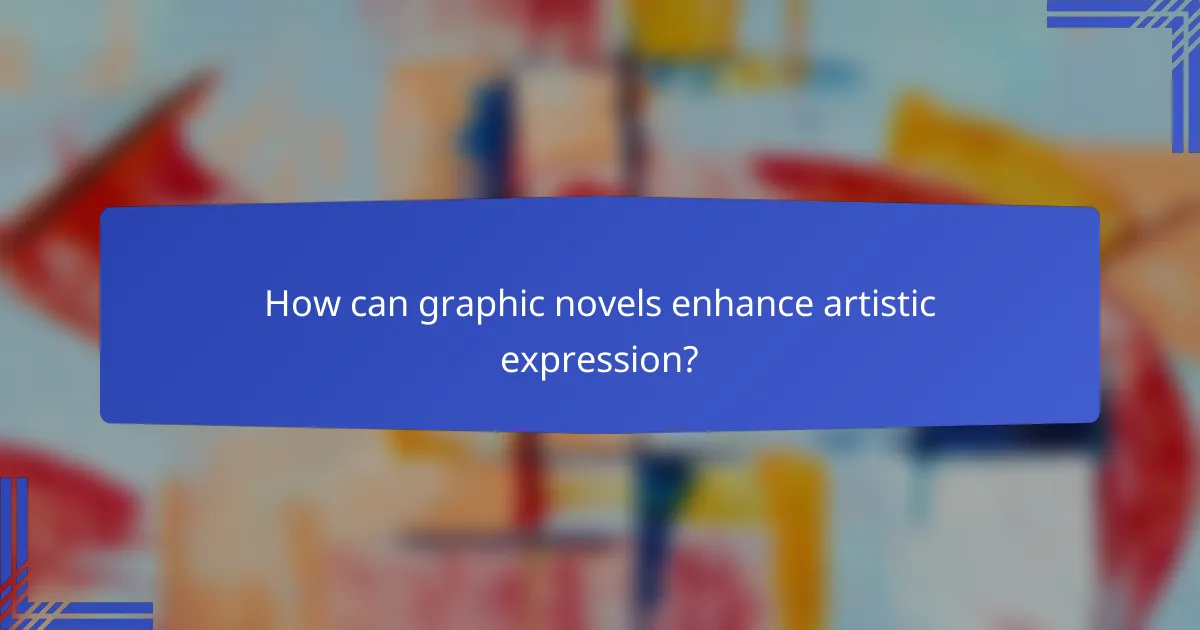
How can graphic novels enhance artistic expression?
Graphic novels enhance artistic expression by combining visual art and narrative storytelling, allowing creators to convey complex themes and emotions through illustrations. This medium encourages innovation in design and storytelling techniques, making it a powerful tool for artists.
Visual storytelling techniques
Visual storytelling in graphic novels relies on the interplay between images and text to create a cohesive narrative. Techniques such as panel layout, pacing, and visual metaphors guide the reader’s experience and enhance comprehension. For instance, varying panel sizes can indicate the passage of time or emphasize key moments.
Artists often utilize techniques like juxtaposition, where contrasting images placed side by side can create deeper meanings. This method engages readers and encourages them to interpret the story beyond the written word.
Character development through illustration
Illustration plays a crucial role in character development within graphic novels. Artists can convey personality traits, emotions, and growth through visual cues such as facial expressions, body language, and clothing choices. A character’s design can evolve alongside their journey, reflecting their internal changes.
For example, a character who starts as timid may be illustrated with smaller, closed-off body language, while a more confident version later might be depicted with open stances and vibrant colors. This visual evolution helps readers connect with the characters on a deeper level.
Emotional impact of color palettes
Color palettes significantly influence the emotional tone of graphic novels. Different colors evoke specific feelings; for instance, warm colors like reds and oranges can create a sense of urgency or passion, while cool colors like blues and greens often convey calmness or sadness. Artists must choose their palettes carefully to align with the story’s mood.
Using a limited color scheme can also heighten emotional impact. For example, a predominantly monochromatic palette may emphasize a character’s isolation, while a vibrant, varied palette can reflect joy and adventure. Understanding color theory is essential for artists aiming to enhance the emotional resonance of their work.
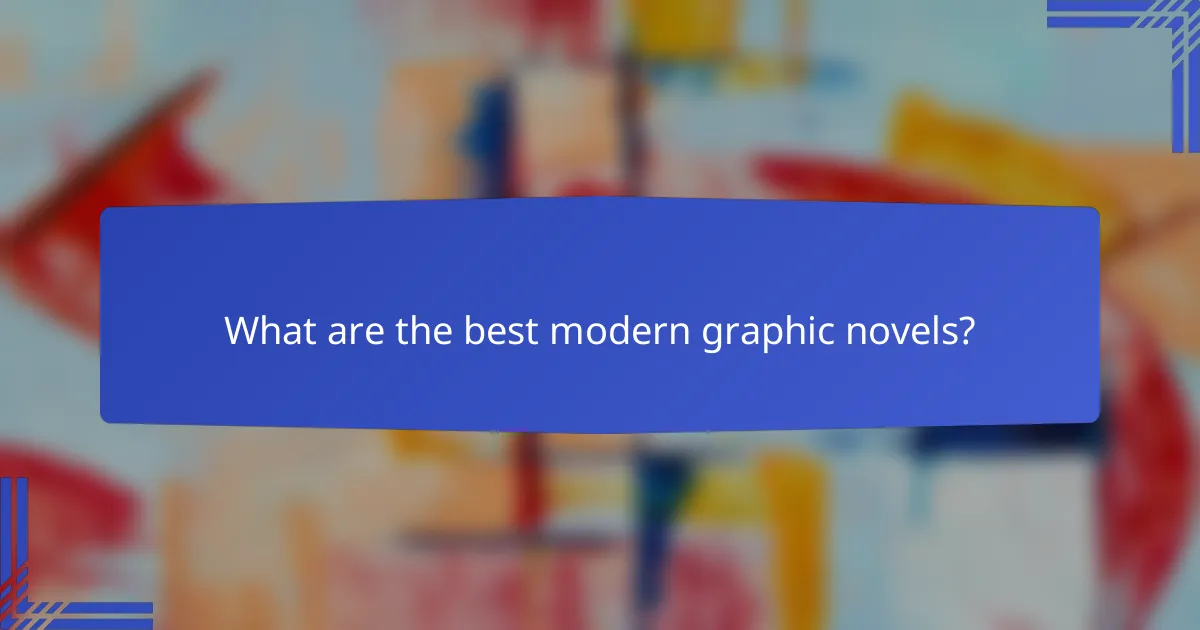
What are the best modern graphic novels?
The best modern graphic novels combine compelling storytelling with striking visuals, appealing to a wide range of readers. Notable titles often explore complex themes and showcase innovative artistic styles, making them essential reads in the genre.
“Saga” by Brian K. Vaughan
“Saga” is a space opera that follows the story of two lovers from warring factions as they navigate a universe filled with danger and intrigue. The narrative blends elements of fantasy and science fiction, creating a rich tapestry of characters and worlds.
The artwork by Fiona Staples is equally captivating, using a vibrant color palette and unique character designs that enhance the storytelling. Readers appreciate the emotional depth and humor, making it a standout in contemporary graphic novels.
“Maus” by Art Spiegelman
“Maus” is a powerful depiction of the Holocaust, presented through the lens of anthropomorphic animals. The story chronicles the experiences of Vladek Spiegelman, a Polish Jew, during World War II, while also exploring the impact of trauma on subsequent generations.
This graphic novel is notable for its stark black-and-white illustrations, which convey the gravity of its subject matter. It has received critical acclaim and numerous awards, solidifying its place as a seminal work in both graphic literature and historical narratives.
“Watchmen” by Alan Moore
“Watchmen” redefines the superhero genre by presenting a complex narrative that questions morality and power. Set in an alternate reality, it follows a group of retired superheroes as they investigate a conspiracy that threatens their existence.
The artwork by Dave Gibbons complements the intricate storytelling, utilizing a grid layout that enhances the pacing and visual impact. “Watchmen” is often praised for its mature themes and philosophical undertones, making it a must-read for anyone interested in graphic novels.
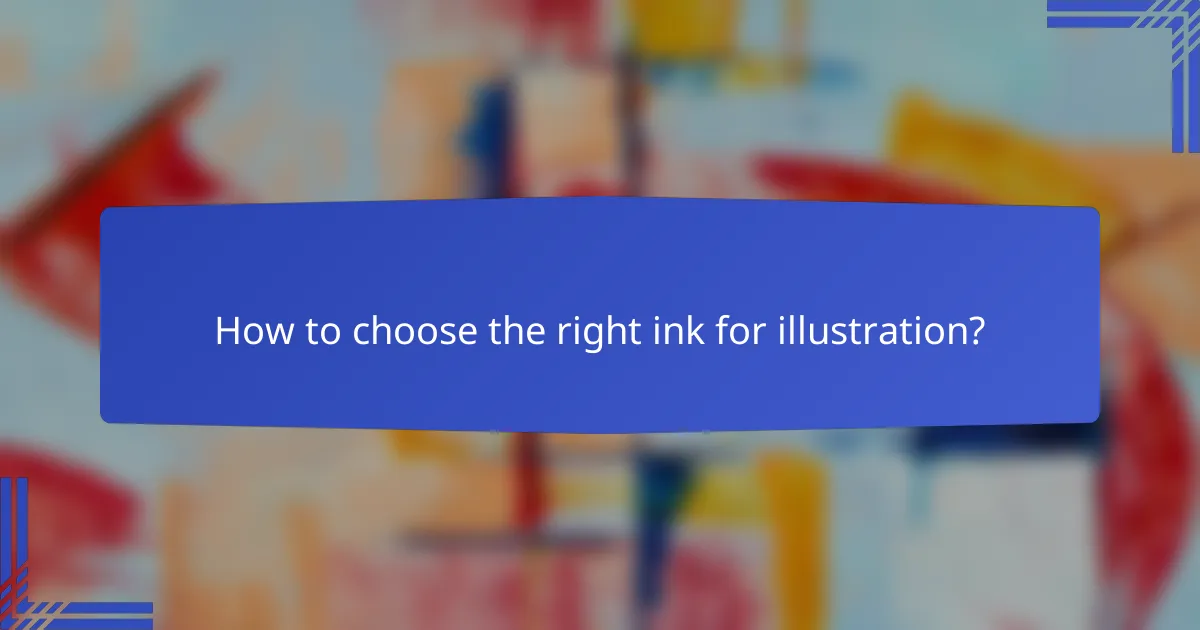
How to choose the right ink for illustration?
Selecting the right ink for illustration involves considering factors like the medium, desired effects, and personal style. Water-based inks are often easier to clean and mix, while oil-based inks provide richer colors and durability.
Types of ink: water-based vs. oil-based
Water-based inks are versatile and user-friendly, making them ideal for beginners. They dry quickly and can be easily cleaned with soap and water, but may not be as vibrant or long-lasting as oil-based options.
Oil-based inks, on the other hand, offer deeper pigmentation and are resistant to fading, making them suitable for professional work. However, they require solvents for cleanup and have longer drying times, which can affect workflow.
Best brands for professional illustrators
Some of the top brands for professional illustrators include Winsor & Newton, Dr. Ph. Martin’s, and Holbein. These brands are known for their high-quality inks that provide excellent flow and color saturation.
Additionally, brands like Speedball and Sennelier offer a range of inks that cater to different styles and techniques, ensuring that artists can find the right product for their specific needs.
Ink drying times and effects
Drying times for ink can vary significantly based on the type and brand. Water-based inks typically dry within minutes, while oil-based inks may take hours to fully cure, impacting the layering process in illustrations.
Consider the effects of drying time on your work; for example, quick-drying inks allow for faster layering but may limit blending options. Conversely, slower-drying inks can facilitate more intricate techniques but require patience and planning.
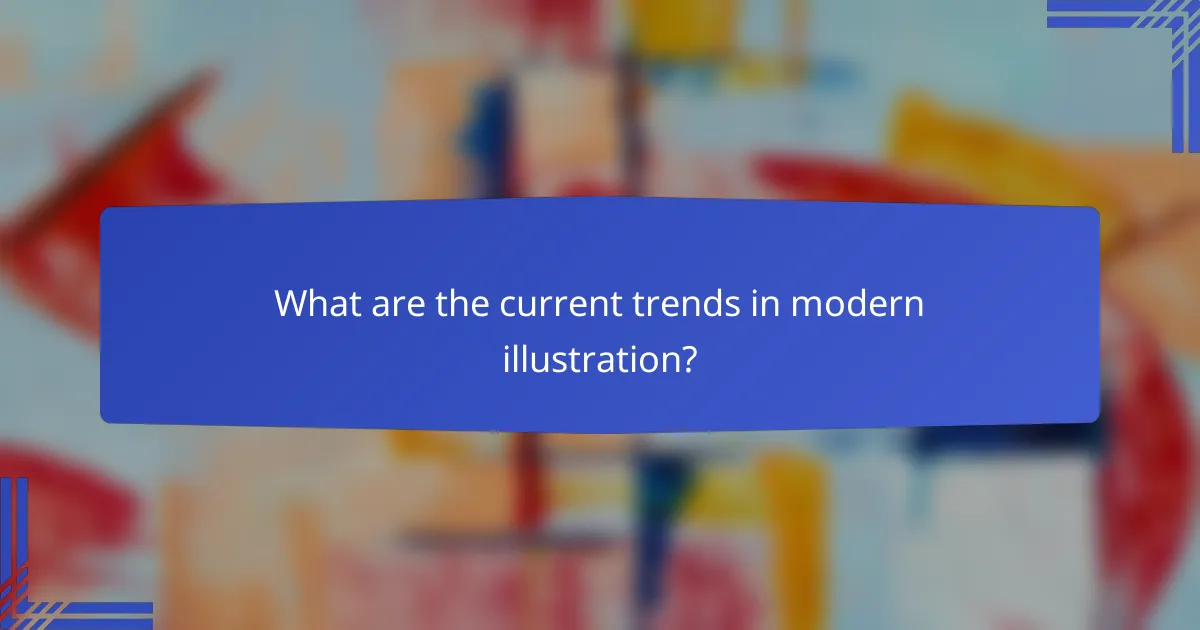
What are the current trends in modern illustration?
Current trends in modern illustration showcase a blend of digital and traditional techniques, with a strong emphasis on personal expression and storytelling. Artists are increasingly leveraging technology and social media to reach wider audiences and experiment with diverse styles.
Digital vs. traditional techniques
Digital techniques dominate the modern illustration landscape, offering tools like Adobe Illustrator and Procreate that allow for precise control and easy revisions. Traditional methods, such as watercolor and ink, remain popular for their unique textures and organic feel, appealing to artists who value tactile experiences.
Many illustrators now combine both approaches, creating hybrid artworks that utilize the strengths of each medium. For example, an artist might sketch traditionally and then enhance the piece digitally, allowing for a richer final product.
Influence of social media on illustration styles
Social media platforms like Instagram and TikTok have transformed how illustrators share their work, leading to the rapid spread of new styles and trends. Artists often adapt their techniques to fit the visual language of these platforms, favoring bold colors and eye-catching designs that stand out in feeds.
Additionally, the interactive nature of social media encourages collaboration and feedback, allowing illustrators to refine their styles based on audience reactions. This dynamic environment fosters innovation, as artists experiment with formats like short animations or comic strips tailored for quick consumption.
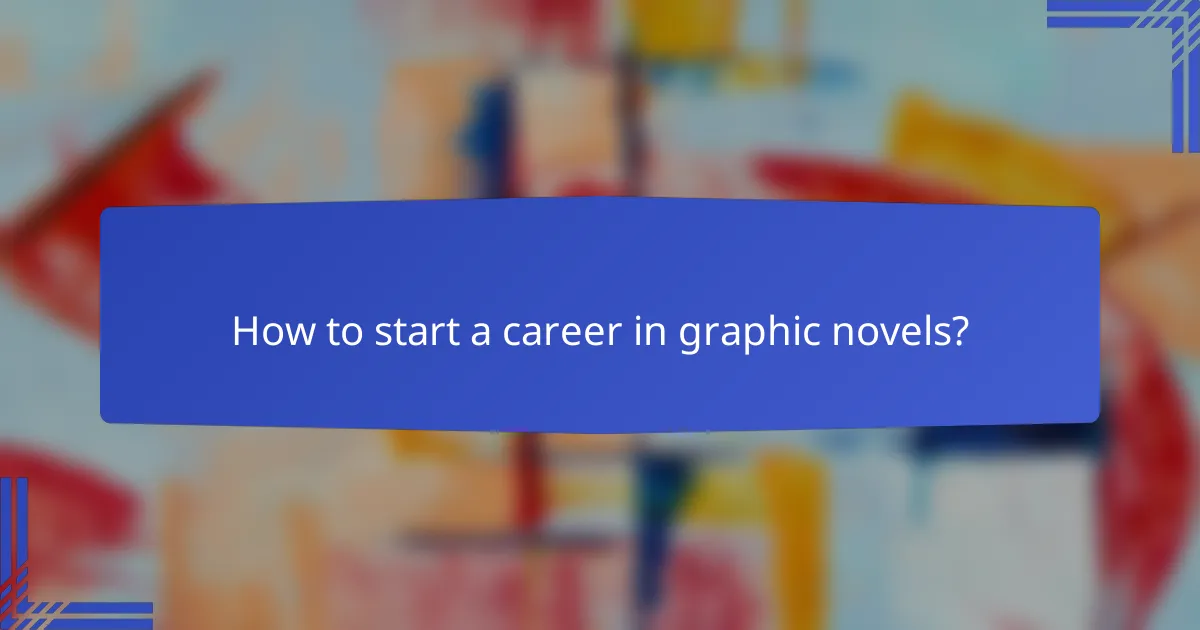
How to start a career in graphic novels?
To start a career in graphic novels, focus on developing your artistic skills, storytelling ability, and understanding of the publishing industry. Building a strong portfolio and networking with professionals are crucial steps to gain entry into this competitive field.
Essential skills for aspiring illustrators
Aspiring illustrators should master drawing techniques, digital illustration tools, and character design. Familiarity with software like Adobe Photoshop and Illustrator is often essential, as these programs are industry standards.
Additionally, storytelling is vital; understanding how to convey narratives through visuals can set you apart. Study pacing, panel layout, and dialogue integration to enhance your storytelling skills.
Networking opportunities in the industry
Networking is key in the graphic novel industry. Attend conventions, workshops, and art fairs to meet fellow artists, publishers, and potential collaborators. Engaging in online communities and social media platforms can also help you connect with industry professionals.
Consider joining organizations such as the Comic Book Legal Defense Fund or local artist collectives, which can provide resources and networking opportunities. Collaborating on projects or participating in group exhibitions can further expand your reach and visibility.
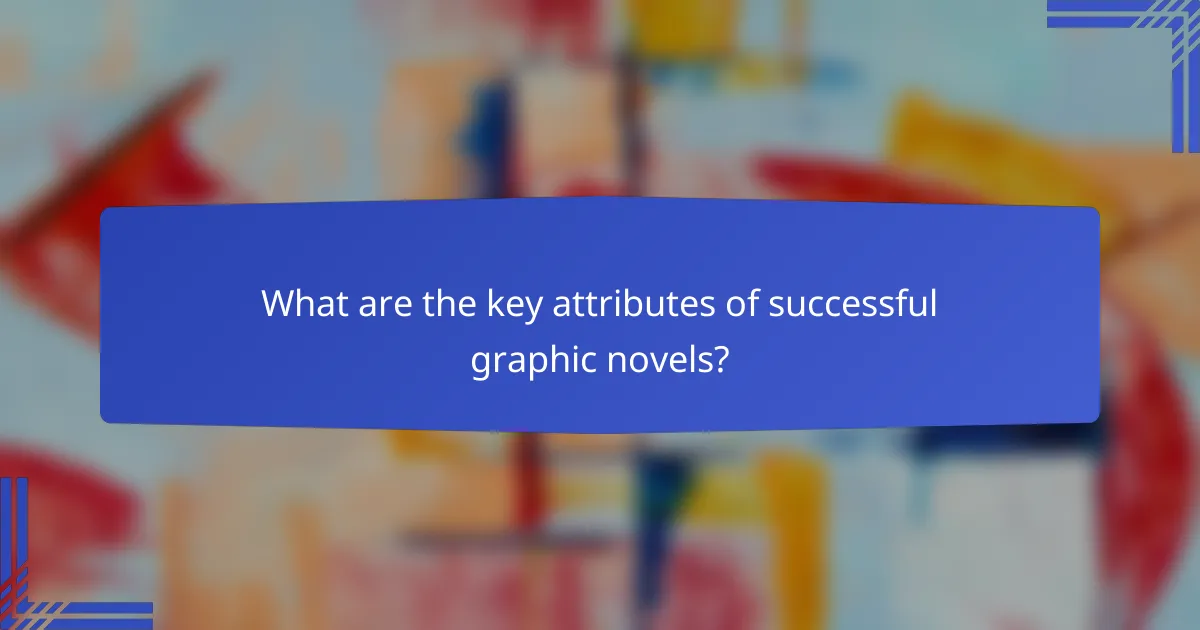
What are the key attributes of successful graphic novels?
Successful graphic novels typically feature a compelling narrative and a distinctive artistic style. These attributes not only engage readers but also enhance the overall storytelling experience.
Strong narrative structure
A strong narrative structure is essential for a graphic novel to resonate with its audience. This includes a clear beginning, middle, and end, along with well-developed characters and a coherent plot. Readers should feel a sense of progression and emotional investment throughout the story.
When crafting the narrative, consider pacing and how visual elements complement the text. Balancing dialogue and imagery can create a more immersive experience. For instance, using visual cues to emphasize key moments can enhance emotional impact.
Unique artistic style
A unique artistic style distinguishes a graphic novel and can significantly influence its appeal. This style should align with the story’s tone and themes, whether it’s whimsical, dark, or realistic. Artists often experiment with various techniques, such as line work, color palettes, and panel layouts, to create a signature look.
For example, a graphic novel with a minimalist style may use limited colors and simple lines to convey emotions subtly, while a more elaborate style might employ vibrant colors and intricate details to draw readers in. It’s crucial to maintain consistency in the artistic approach to ensure a cohesive reading experience.
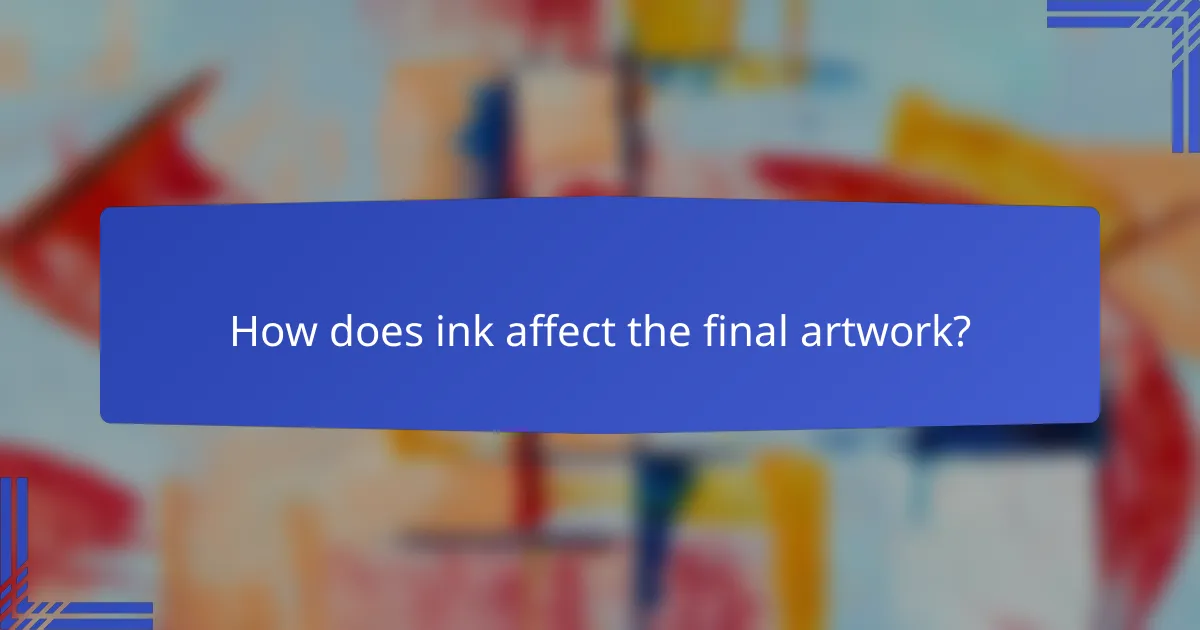
How does ink affect the final artwork?
Ink plays a crucial role in determining the final appearance and quality of artwork, particularly in graphic novels and modern illustrations. The choice of ink can influence everything from color vibrancy to texture and durability.
Texture and finish variations
The texture and finish of ink can dramatically alter the visual impact of artwork. For instance, matte inks provide a soft, non-reflective surface, while glossy inks enhance color saturation and vibrancy. Artists often choose based on the desired aesthetic effect and the medium used.
Different ink types, such as water-based, oil-based, or acrylic, offer unique textures. Water-based inks are typically easier to work with and dry quickly, while oil-based inks provide richer colors but may take longer to dry. Understanding these differences helps artists select the right ink for their specific project.
Impact on reproduction quality
The quality of ink significantly affects the reproduction of artwork, especially when printed. High-quality inks ensure that colors remain true to the original piece, while lower-quality inks may lead to fading or color distortion over time. This is particularly important for graphic novels, where color consistency is key to storytelling.
When reproducing artwork, consider the printing method as well. Digital prints often require specific ink formulations to achieve the best results, while traditional methods like screen printing may use different inks for optimal color transfer. Always test inks on sample prints to gauge their performance before final production.
